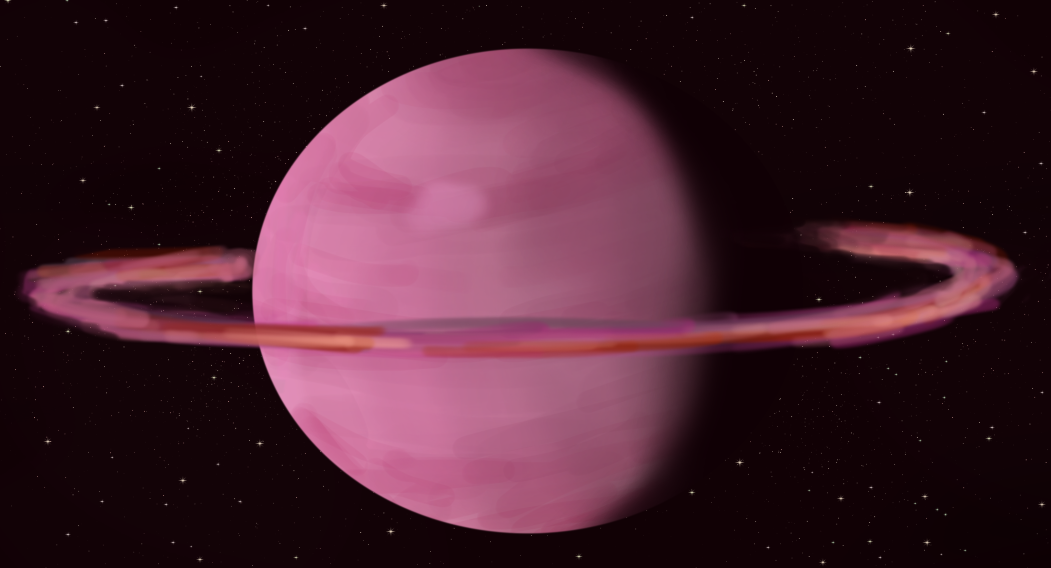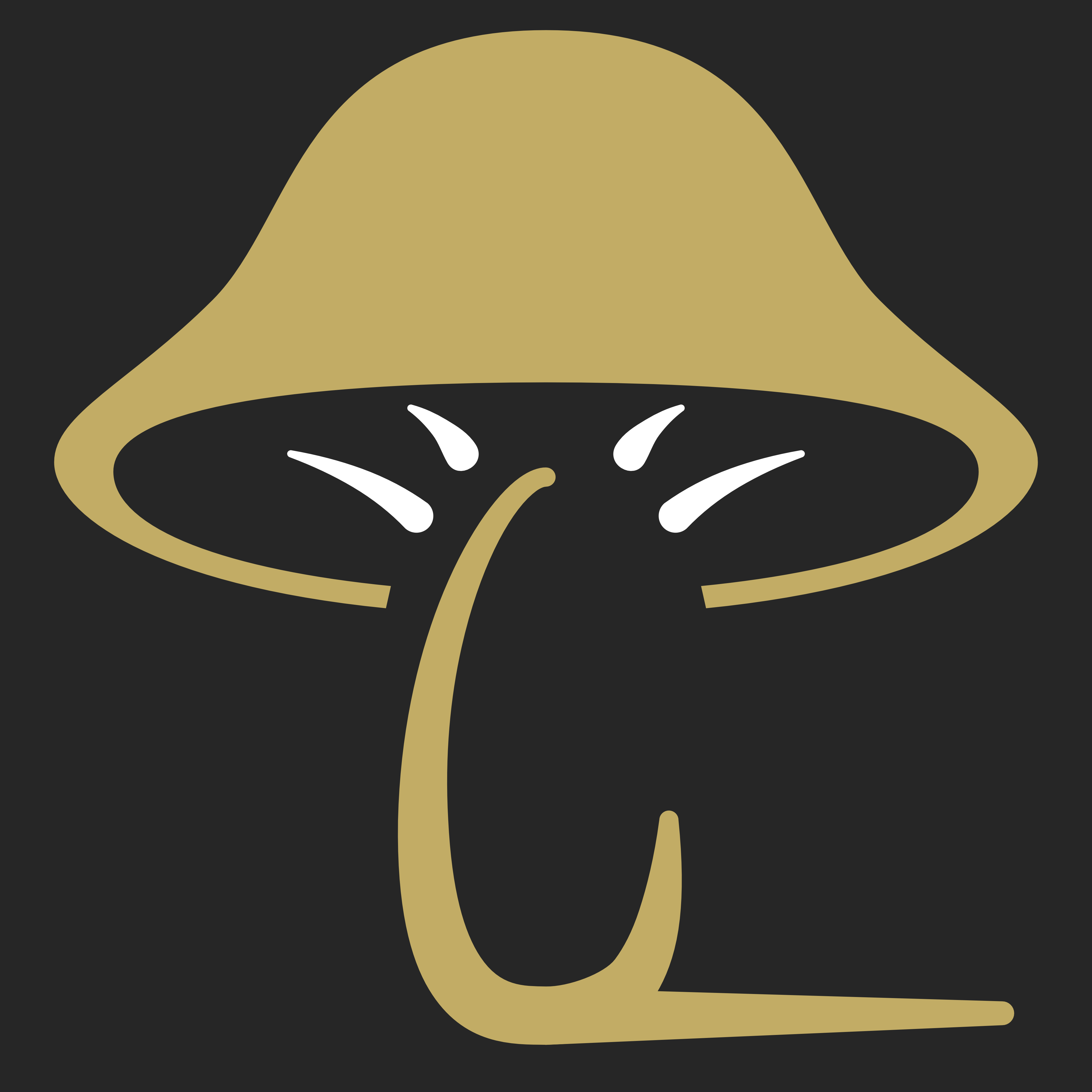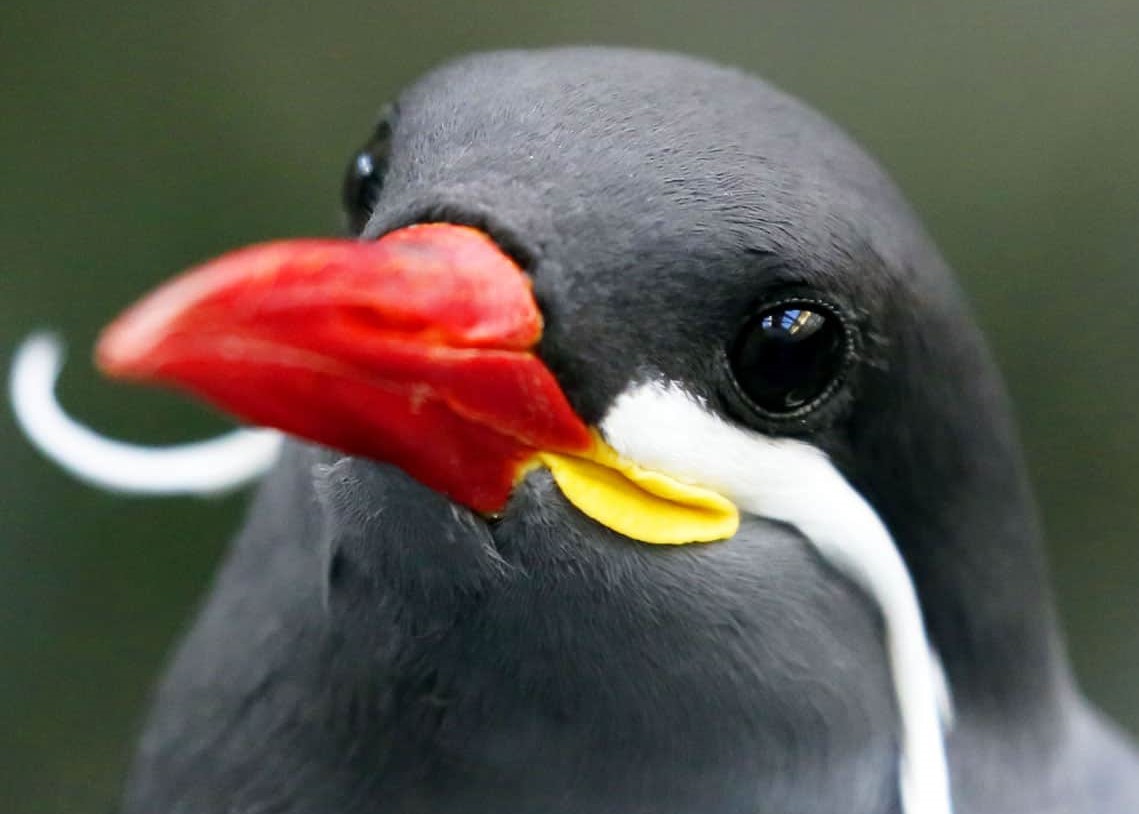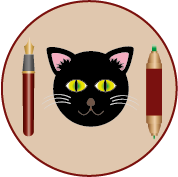Saturn
The only seraphenic planet in the Sol System, Saturn is referred to as the pink delight in close space colonies. Its bright shell holds dark secrets that haunt those who slither their way into this intensely guarded planet.
Geography, Location & Climate
Saturn would not exist if it wasn't for the Sentry Sea, a supermassive Astral Sea just out of reach of the Sol System. Several billion years ago large strands of the sea broke off and caught in Aquarius' orbit, eventually forming what is now this planet. This is in fact how all seraphenic planets are created, and what distinguishes them from other planetary types.
Seraphenic planets have a habit of gathering asteroids. Saturn has a very large set of rings, mostly comprised of excess astral mist, water, ice, asteroids, and other natural satellites. These rings are vast and have well-developed ecosystems which thrive in their respective environments.
Saturn's rings are much more striking than the planet itself; streaks of yellow and red flash between bright pinks.
This planet has a significant oblate spheroid shape, bulging at the Equator and flattening at the Poles. Both Poles generate massive aurora displays that span at least ten thousand miles in any direction.
The entirety of Saturn is blessed with vivid pink swirling clouds, weaving through each other and creating an ethereal lattice in the skies. All seraphenic planets are heavenly in their aesthetics, but Saturn is especially so.
Saturn's Core
Saturn's core is mostly comprised of rock and ice, reaching surface temperatures of -20 degrees Celsius. The core of this rocky sphere is quite the opposite, reaching over ten thousand degrees. This core is of a similar size to planet Earth, only much more dense.
History
As a planet, Saturn is around 4.6 billion years old. Life on Saturn existed way before its planetary status. Many animals native to the Sentry Sea migrated along with the strands of astral mist that got caught in the star's orbit. As a result, life quickly evolved and adapted to a new environment. Descendents of animals such as lordricarrs exist, having diverged so many times that it has brought about an entire new class of organisms, known as saturans.
The most prevalent saturans are saturnians, the only native sophonts of Saturn. These people evolved around five million years ago on the rocky core, their intelligence putting them outside of food webs as they could defend themselves from every other animal on the planet.
Over the last thousand years, Saturn's technology level has exponentially increased. Space-travel has only been around in the last eight-hundred years or so, quite recent for most planets of this age, but these people have given themselves a solid name in the wider galaxy.
Ecology
Whistle Walker
Only one animal can produce such ethereal croaks and whistles. Whistle walkers have a misleading name; these animals never leave the skies. Their lack of legs are made up for in the form of giant outstretched wings, which beat once an hour to keep these majestic animals afloat.
Average Length
7 - 18 metres
Average Wingspan
30 - 65 metres
Average Lifespan
50 - 90 years
Saturn's wildlife evolved from the few species that survived the migration from the Sentry Sea to where Saturn is today. Many evolved to become land-based, occupying the land that Saturn's core provided. Complex ecosystems have evolved to fill many niches, in the skies, on land, and underwater in the small oceans on the core.
The largest sky-based animals all evolved from lordricarrs. These massive, kilometre-wide animals have diverged to create a diverse order of organisms, lordica.
This order sits under the class saturan, a taxonomically questionable class as it features organisms from very different genetic backgrounds.
The clouds of Saturn are full of flying organisms of ranging sizes. Magnificent birds such as saturn albatrosses and orbiterns fly gracefully, hunted by a number of birds of prey such as mimas hawks. The feathered whistle walkers never leave the skies, feeding, mating, giving birth, and dying, mid-flight.
"Mum, look! The whistle walkers are calling again.""Oh yeah! Tphim! Go get your camera! They only call this loud once a year."
Space Legion
The Saturn Space Legion may be recently founded but has had a substantial impact on the Sol System. The Legion has invented laws that allow for planets to claim unnamed satellites on any other planet, so long as there is a saturnian working in their Space Legion. Given that the only saturnians work in Saturn's Space Legion, how this law was passed by the higher-ups is anyone's guess.
Saturn has a nasty reputation for pranking other planets. These somewhat harmless pranks are done by the Saturn Space Legion, who think it is hilarious to kidnap people, animals, and even random landmarks, from other planets.
Most recently, the Legion picked up the Statue of Liberty from planet Earth, which is now under Jovian rule. It is safe to say the Jupiter Space Legion did not find it funny. Many planets have forbade saturnians from stepping foot on their soil, as they know where these people go, drama follows.
Some wonder what this Space Legion is hiding. Every time Saturn pulls a prank on another planet, another mysteriously disappears from the radar.
6
Distance From Sun
9.5 AU
No. of Natural Satellites
793 (outside of rings)
Significant Natural Satellites
Dione, Prometheus, Mimas, Rhea, Tethys, Titan












I like the interpretation about the formation of Saturn and that the inhabitants like to play pranks on other planets? Very mysterious thing - I hope we find out more about it.
Thank youuuu! Who knows, maybe people will find out about it soon :O